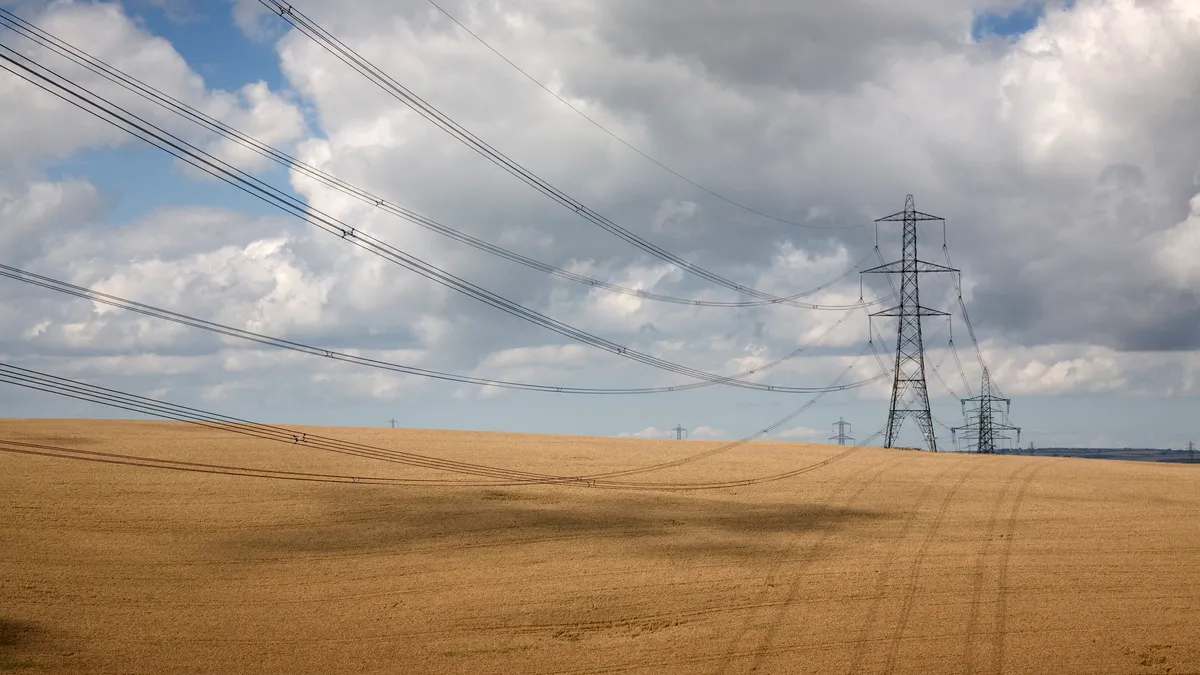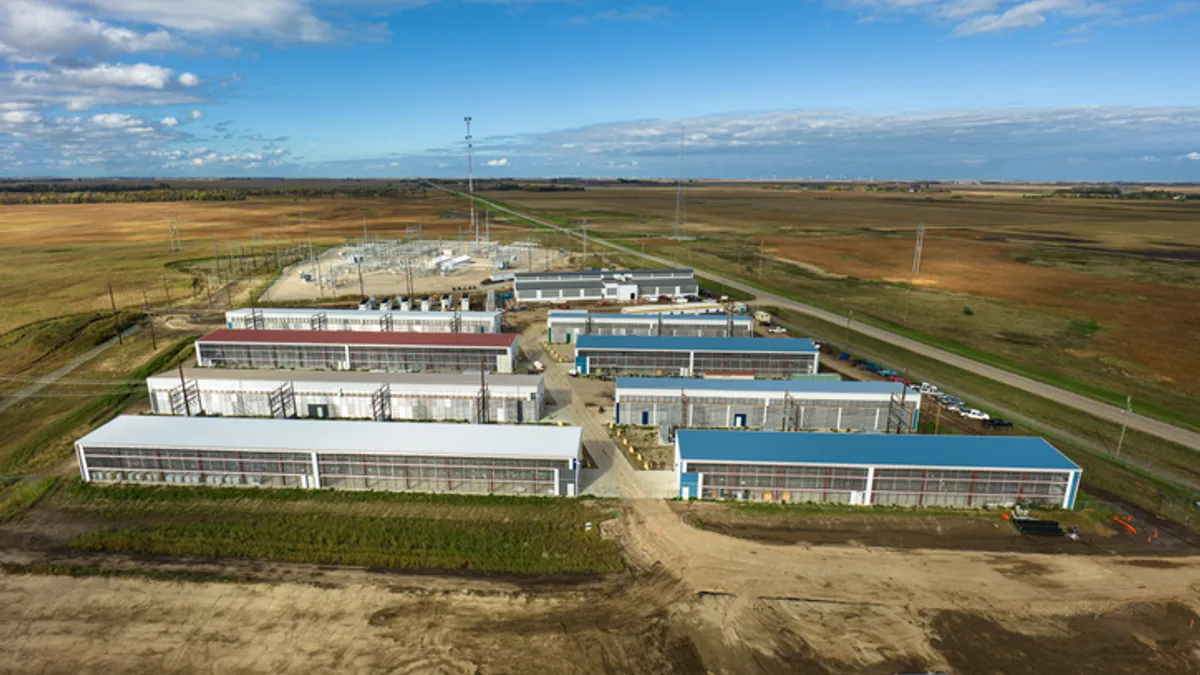Good morning from San Diego. Day 1 of DistribuTECH 2015 is officially over, and day 2 is just getting ready to start. It was a whirlwind first day, from the keynote addresses delivered by the CEOs of San Diego Gas & Electric and Edison International to the interviews Utility Dive obtained on the show floor and elsewhere. (Our coverage of the keynotes can be found here.)
If you're interested staying up-to-date on the conference in real time, you can follow Utility Dive's editors on Twitter at @davide_savenije and @GavinBade. And if you're here in San Diego and want share your perspective on the conference so far, please don't hesitate to reach out.
Here are the highlights from day 1, followed by a list of announcements made at the show. Stay tuned tomorrow, when we'll have more exclusive coverage coming.
PG&E: Solar, storage, EVs make grid 'extremely complex to manage'
Davide Savenije: Until recently, Pacific Gas & Electric handled the operations of its distribution grid, which serves 1.4 million customers in California, with 13 legacy control centers.
"California presents a real challenge in that it's if not the highest, one of the highest rapidly-growing demand response/distributed generation type of distribution grids," Gary Cassilagio, PG&E's director of business applications in Electric Distribution Operations, told Utility Dive in an interview on Tuesday. "If you look at the forecasts for the coming years, [rooftop solar] exponentially grows even faster. We're looking at [energy] storage requirements, electric vehicle connections to the grid — and so this all makes the distribution grid extremely complex to manage and operate and engineer against."
When PG&E saw these changes coming down the road four years ago, the utility decided to embark on a new project to completely redesign its control center set-up.
The 13 legacy centers were "not at all" standardized before, Cassilagio said. "Our 13 centers had evolved differently... At a high level, they were standardized, but when you got down a little bit deeper, you found out they had a lot of one-off processes and a lot of logistical differences between the centers."
The plan was to turn 13 legacy centers into three state-of-the-art control centers. The first facility went live in November 2014. "We're standardizing our processes moving forward with the three new centers," Cassilagio said. "The technology is standardized, the logistical layouts of our new control centers are standardized, every work station and pod is identical in all three [facilities]," he added.
That's a huge benefit that, for example, enables operators to remotely log in and out of jurisdictions as needed. "These are not three independent centers," Cassilagio said. "It's one virtual center."
That's just some of the thinking that went into PG&E's new distribution control center set-up. Stay tuned, though — we'll be following up with more from this exclusive interview in the coming weeks.
DTE Energy: We want to be ready for whatever may come
Davide Savenije: Haukur Asgeirsson has been working at DTE Energy for over 35 years, but the last few have been unlike anything that came before.
Known as "Hawk" — it's even on his business card — Haukur is the manager of power systems and technology at DTE Energy, the investor-owned utility that serves Southeast Michigan. The utility may only be seeing about 250 customers put solar on their rooftops per year, but Hawk is already looking at the potential challenge coming down the road.
"We don't have a large scale problem like Hawaii and San Diego [do], but we have had pockets where we had maybe part of a feeder where we have a concentration of solar customers that are causing high voltage," Asgeirsson told Utility Dive in an interview on Tuesday. "[H]ow do you deal with that? Because high voltage is causing their inverters — on weekends when the load is low — to go offline and that kind of pisses them off. ... That's a challenge and that's where technology can help us."
"We're ... dabbling with the technology — smart inverters, storage — to manage the grid," he said.
Hawk sees electric vehicles as a "promising" load for the industry. The only potential challenge is charging them, but unlike solar, Hawk thinks the issues therein can easily solved by workplace charging and rates that incentivizes charging to take place overnight.
Hawk touched on utilities getting into the home, which he called "a grey area." It remains to be seen whether, where and how regulators will allow utilities to invest beyond the meter. "But I think it's going to allow the customers to be more interactive to the utility and to what they're consuming," Hawk said. "Managing all that is kind of wide open and it's going to start accelerating in the next two to three years."
Hawk sees the adoption of new technology picking up faster and faster than ever before — a result of new developments driving down the price of technology, which in turn allows DTE to acquire to more of it and integrate it onto the grid.
Many of the new technologies the industry is talking about today — solar, electric vehicles, energy storage — haven't quite been adopted at the same rate in Michigan as in California and Hawaii, but Hawk is getting prepared. "Even though we're not hit as hard as some others, we want to be ready," he said. "We want to be ready to take care of that if it comes."
DistribuTECH panels: DER integration and utility business models for DR and EE
Gavin Bade: Utility Dive attended two panel sessions at DistribuTECH on Tuesday — one on distributed energy resources and one on demand response and energy efficiency. Here's a quick rundown of the key points covered.
Integrating large-scale renewable resources beyond the meter
Thomas Bialek, Chief Engineer for San Diego Gas & Electric, took to the podium first and opened up with his utility's version of the duck curve. On heavy load days, Bialek said, SDG&E has to ramp more than 1,500 MW in 2.5 hours. Combine that with the fact that SDG&E currently gets about 33% of its electricity from intermittent renewable resources (and another 3% from distributed solar), has the most electric vehicles for a city of its size, and a grid built for customers largely without air conditioning, and you've got a classic power scheduling problem.
Bialek told the audience that advanced weather modeling combined with fast-acting natural gas plants have helped his utility cope with the ramp. More holistic T&D planning is also necessary, along with smart grid investments, to ensure electric reliability on a grid with so much renewable power. But it’s really the slow pace of regulatory changes to accommodate distributed energy resources that's holding SDG&E back, Bialek said. The tech is already there to get the resources on the grid.
Jim Parks, a program manager at Sacramento Municipal Utility District, echoed many of Bialek's sentiments on the problems associated with DERs and integration. They are, after all, both California utilities. Parks said that distributed solar and efficiency measures can reduce peak residential load 55% on a good, sunny day, but location is an issue. Too much of it is concentrated in particular neighborhoods, which makes getting that intermittent, temperamental supply to areas of high demand a problem. Unlike other utilities, though, SMUD seems to be in a good position to integrate more rooftop solar. Parks told the crowd the utility's circuits can handle up to 200% of peak day load in rooftop solar capacity before issues arise.
Parks also had some interesting points on SMUD's fuel mix. Their goal as a utility, he told the crowd, is to get to a 90% reduction in greenhouse gases from the electricity it generates and buys, as well as 1.5% in efficiency savings each year. That drawdown in fossil fuels over the next few decades has created a "power gap" — a chunk of demand they haven't decided how to cover yet. The issue, Park told Utility Dive, is not that they can't do it, but rather what will be most cost effective in the future. Centralized generation will still play a role, but it will be a different one, he said. Perhaps in the future combined cycle plants will largely be run by bio-gas, for instance. At the end of the day, it will likely be state energy regulators who decide what model of decarbonization will be cheapest for utilities.
How utilities are developing business models around demand response and energy efficiency
Jim Eber, Com Ed's demand response and dynamic pricing manager, was up first at one of DistribuTECH's demand response and energy efficiency panels. Since Com Ed introduced its real-time pricing program in 2007, customers have saved an average of 20% of electric supply, Eber said. But many of those savings were erased during the polar vortex of last year.
"We hit numbers that I couldn't even fathom," in terms of load during the vortex, Eber said, and that was combined with severe capacity restraints. On Jan 7, 2014, total forced outages in PJM equaled about 22% of total capacity, Eber said, and real-time prices reached nearly $2 per kWh, when 30 cents is usually high.
All that meant that customers on the real-time pricing program saw their bills jump an average of $81, even though demand response programs reduced electricity demand significantly. But, to Eber's surprise, few customers decided to abandon the real-time program after the vortex to go a different electricity provider or back to fixed rates. Since then, customers have saved an average of 4% to 7% on their bills in the real-time program.
Mark Martinez of Southern California Edison was next up with a fitting metaphor for the difficulties in planning around demand response:
"If you blow your horn, will the unicorns arrive?" he asked.
SCE, he said, has about 317,000 customers enrolled in its "summer discount plan," averaging $160 in bill credits annually in exchange for the utility controlling the customer’s air conditioner. But the purpose of demand response over the past decade has changed, he said.
What used to be a last-resort option to prevent or mitigate blackouts and brownouts during the California energy crisis is now about giving customers more pricing options and enhancing grid reliability. In an era of distributed generation and intermittent renewables, that function of DR will be all the more important.
Finally, Tim Duff, general manager of regulatory strategy and evaluation for Duke Energy, took the podium. Other than outlining Duke's DR programs, most of his presentation focused on regulation. The reason, he said, was that there's an "inherent conflict" when demand response and energy efficiency programs are managed separately.
When utilities are under pressure to reduce energy consumption through efficiency programs, he said, it reduces the efficacy of their demand response programs. Not only is there not as much load to curtail, but reduced loads can make demand response payments less lucrative for customers. Regulators around the country must step up, he told the audience, to mitigate for the contradiction.
One topic not addressed during the presentations was the drama surrounding FERC Order 745. Perhaps that's fitting, as the order applies to wholesale markets, but Utility Dive thought we ask about it anyway.
In all, the DR managers were largely unconcerned. Martinez of SCE told Utility Dive that they're focused on perfecting their demand response programs in the retail market, so they could take advantage of an opening-up of wholesale markets to DR when the time comes. Com Ed's Eber expressed confidence in PJM's efforts to reduce uncertainty for demand response providers and utilities while Order 745 winds its way through the courts, and said his utility is prepared for whatever happens. Only Duke's Duff said the 745 controversy caused them an issue, as they were directed in Ohio to bid DR into wholesale markets. Those efforts are on hold until the Supreme Court decides the fate of DR in wholesale markets.
The long, big list of announcements: Part 2
On Tuesday, we compiled the list of important announcements being made at DistribuTECH 2015.
Here is a list of announcements that weren't included in yesterday's preview of the show.
Editor's note: This list is not comprehensive — it's inevitable that we missed something. If you have an important announcement you're making at DistribuTECH, but it's not on this list (or yesterday's list), shoot me an email at [email protected].
- Siemens revealed it is helping utilities move into the microgrid space with a new advanced microgrid controller.
- DNV GL announced that 30% of high voltage transmission and distribution components fail to pass its certification tests.
- Oracle announced that Kansas City Power & Light implemented a number of Oracle Utilities solutions to support its smart meter roll-out.
- Enphase announced it has upgraded the capabilities of its 800,000 smart microinverters installed in Hawaii to enable better solar integration onto the grid.
- EnerNOC announced it has expanded its energy intelligence software contract with Australian utility Ergon Energy.
- Aclara announced its new Metrum LTE product, which helps provide utility infrastructure with cellular connectivity.
- Advanced Control Systems announced two new mobile tools to help utilities deal with power outages and customer communications.
- S&C Electric announced its new SpeedNet SDR Software Defined Radios, which combines S&C's mesh-radio technology with XetaWave's software-defined radio platform.
- Motion Computing announced two new rugged tablet PCs for utilities.
- QiniteQ announced its new LineWatch distribution grid sensing and monitoring system.




















